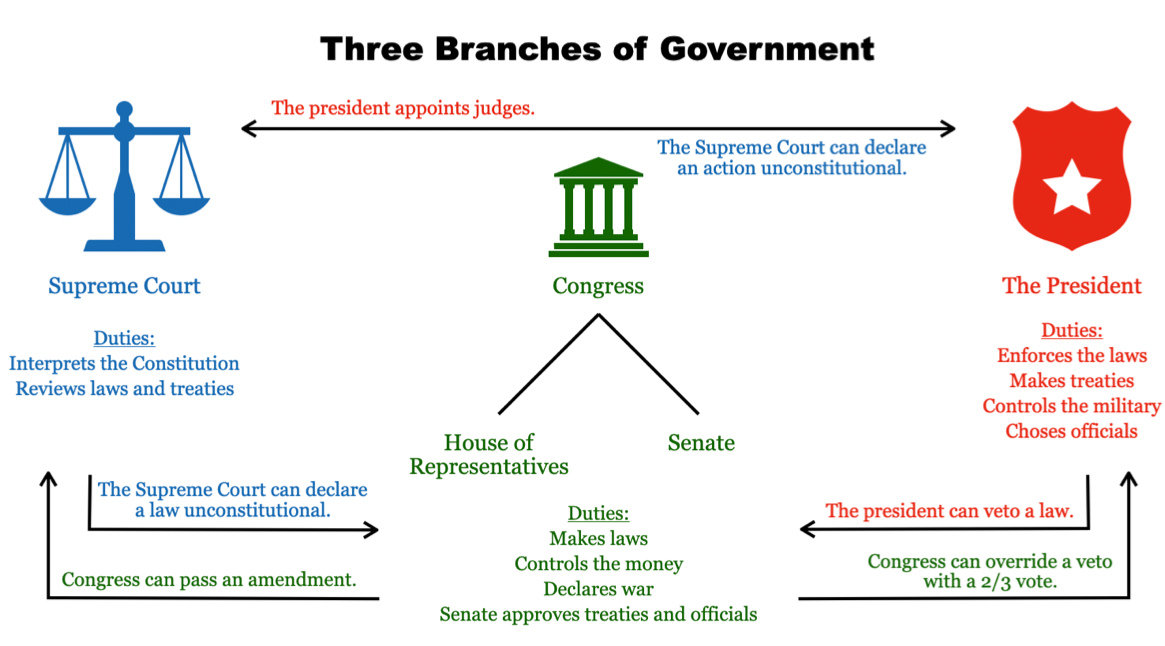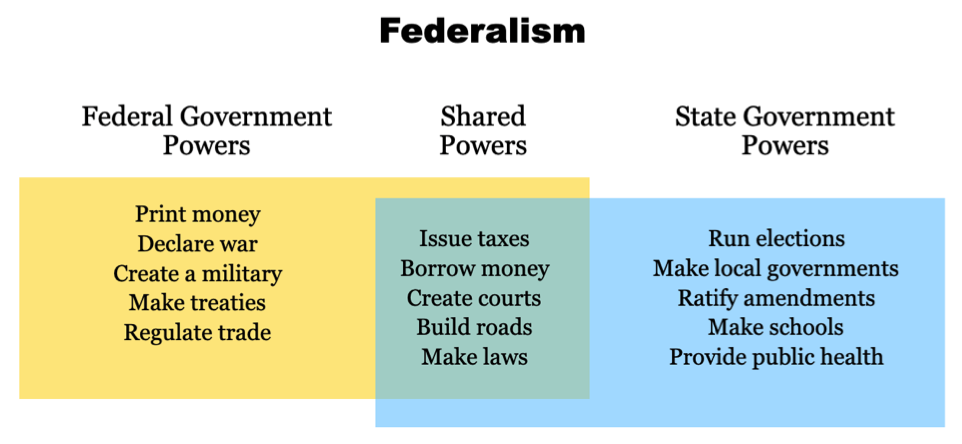Chapter 6:
The Functioning Constitution
1. Three Branches
The Congress
It is the job of Congress to make the laws of the United States among many other duties. Congress is separated into two houses or groups: the House of Representatives and the Senate. Both houses must approve any bill before it can go on to become a law.
Each state gets at least one representative in the House. The more people that live in a state, the more representatives that state gets. Each representative gets one vote. Elections are held for all members every two years. There are today 435 members in the House.
Every state gets two Senators. Originally, each state legislature picked their Senators. In 1913 the 17th Amendment allowed voters to elect their Senators instead. A Senator serves for six years before reelection.
In addition to passing laws, the Senate must approve all treaties or agreements with foreign countries. Any people the president appoints to government positions must also be approved by the Senate.
The President
The president is in charge of enforcing the laws passed by Congress. When both houses of Congress pass a bill, it goes to the president. If the president signs the bill it becomes a law. If the president vetoes or cancels the bill it goes back to Congress. If Congress votes again and two-thirds of Congress pass the bill it becomes a law.
To help enforce the laws passed by Congress, the president has various departments like the Department of the Treasury, the Federal Bureau of Investigation, and Federal Emergency Management Agency to get the job done.
The Supreme Court
The Supreme Court is the highest court in the country. They determine what the Constitution means. They have the final opinion on all court cases. They can also declare a law unconstitutional or illegal. The president appoints members to the courts and the Senate must approve all the appointments.

2. Amendments
Creating an Amendment
An amendment alters the Constitution whenever the people or government think it is necessary. An amendment can be proposed by two-thirds of Congress or two-thirds of state governments that agree to meet at a convention to propose amendments. When an amendment is proposed, then it must be ratified or passed by three-fourths of the state governments or three-fourths of the people voting in state conventions.
3. Participation
Getting Involved
Citizens can get involved in politics in many ways. A person can run for office and try to make changes they think are important. A person can also support a candidate for office or cause by voting. Some people give money or join a political group to promote a candidate or cause.
4. Federalism
Division of Power
Power in the United States is divided between the federal government and the state governments. There are some things that only the federal government can do and some things that only the state governments can do. Then there are things that both governments can do. This division of power prevents any one type of government from becoming too powerful.
